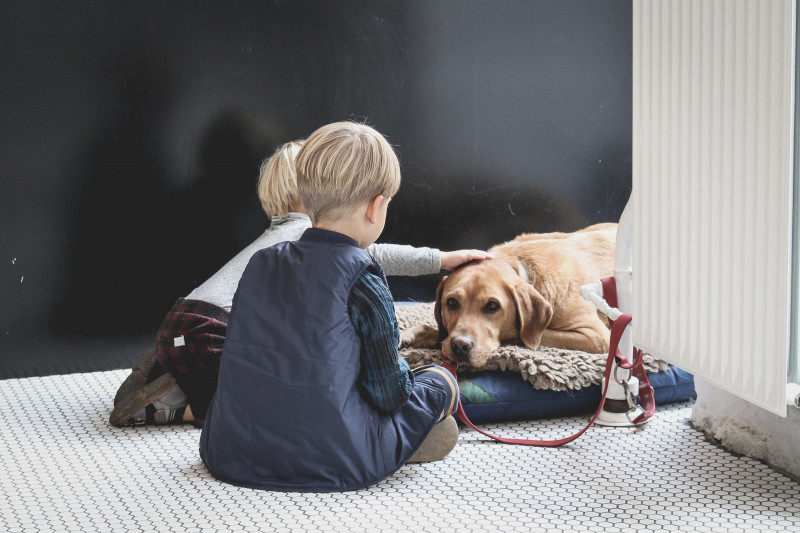How to teach dogs to be around children

Dogs and children can have an amazing bond which is lovely to see, especially if the dog is part of a family with kids. Whilst some dogs seem to naturally love children and instinctively know how to act around them, this is not the case with all dogs. Therefore, dogs still need to be sufficiently trained and socialised. It is also important that children understand how to act around dogs as well. Here we discuss how to teach dogs to be around children.
Socialise your puppy
Socialisation is a vital element to your dog’s development. Puppies go through a critical stage when they are younger, around about 8-16 weeks old. This is when puppies can start learning a lot of their behavioural traits, therefore it is important that they are socialised as soon as possible. This can help them learn to be comfortable in a variety of situations. Try and introduce your puppy to a range of scenarios, such as a group of people, other dogs and children of various ages. Ensure the children are also taught how to behave around dogs in a gentle way. This will help to make sure that puppies are introduced to children in a positive way.
You can still socialise your dog around children even if they are no longer a puppy. The process may be slower but it is definitely still possible. Just remove the dog from the situation if they start to show signs of stress.
Introduce dogs to children’s toys
Some dogs may be scared of children. Kids can be loud and so can their toys. Introduce the dog to some of your children’s toys so that they can familiarise themselves with them. Some sensitive dogs may be afraid of these toys and therefore start associating this fear with children which is something we don’t want to happen. Alternatively, dogs may think the kid’s toys are for them and whilst this may be funny it can lead to the toys getting destroyed and even accidents such as accidentally nipping a child or knocking into them if they get in the way of the toy. Start by introducing the toys to the dog whilst the children are not around. Use this time to teach them commands to leave the toys and not steal them.
Don’t allow dogs to jump up
Although it can be heart-warming when a dog jumps up at you to greet you, this behaviour can be terrifying to a child and can even lead to injury. Try not to allow your dog to jump up at all if possible. If the dog does jump up, command it to sit or move them into another room. Reward them with treats to reinforce this behaviour.
Use positive reinforcement
A great tactic whilst training dogs is using positive reinforcement. Reward the dog with treats, praise, and attention when they behave well around children. Over time they will learn to repeat this behaviour as they will associate it with getting rewarded.
Consider your dog’s feelings
It is important to consider your dog’s feelings and not to force any behaviour onto them. For example, if your dog is clearly stressed or angry, never force them to be around children. Some people think holding a dog and petting it is a good way to start a bond between dogs and children. However, if the dog does not want this to happen it can end up being aggressive or develop a fear. Dogs need to feel comfortable so ensure they are given the opportunity to approach children at their own pace.
Teach children how to handle dogs
It is vital that children know how to behave correctly around dogs as well. It is a two-way street. It can be common for children to pet heavily or throw their arms around dogs. They can also often pull the dog’s tail. Although some dogs are used to this behaviour and tolerate it, if they have never been in this scenario before, they could lash out. Therefore, teach children how to pet the dog gently before they are introduced. If the dog shows any signs of anxiety, keep the child at a distance.
Dogs and children can be a great combination as long as they know how to behave around one another. Here are just a few ways to teach dogs to be around children. It is just as important to teach children how to correctly act around dogs and how to care for them. If this is done correctly, the bond and love between them can be extremely special.